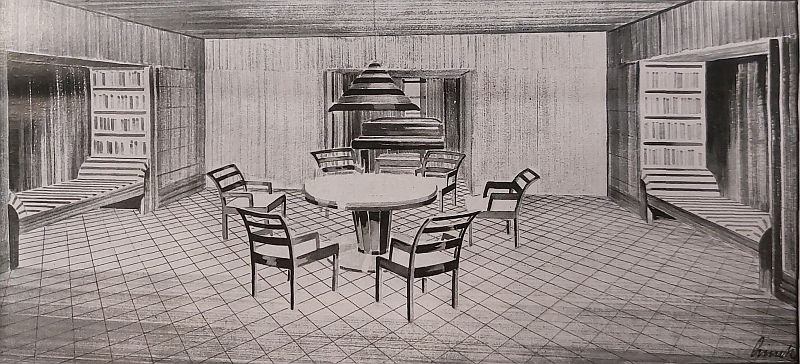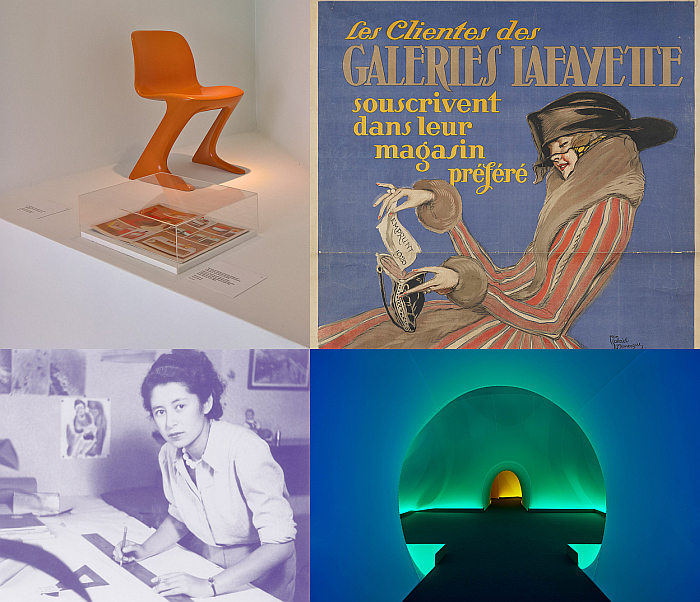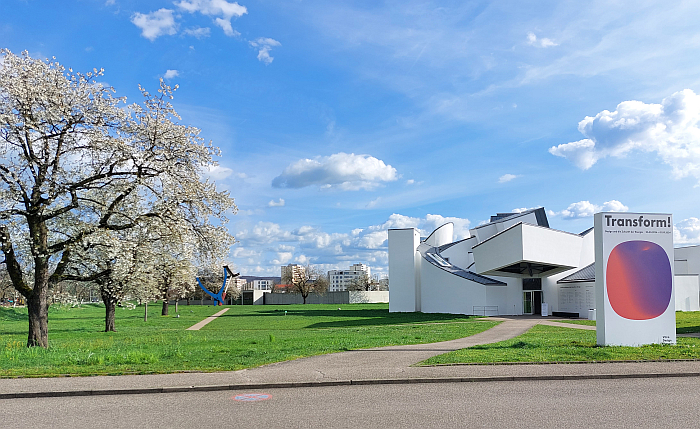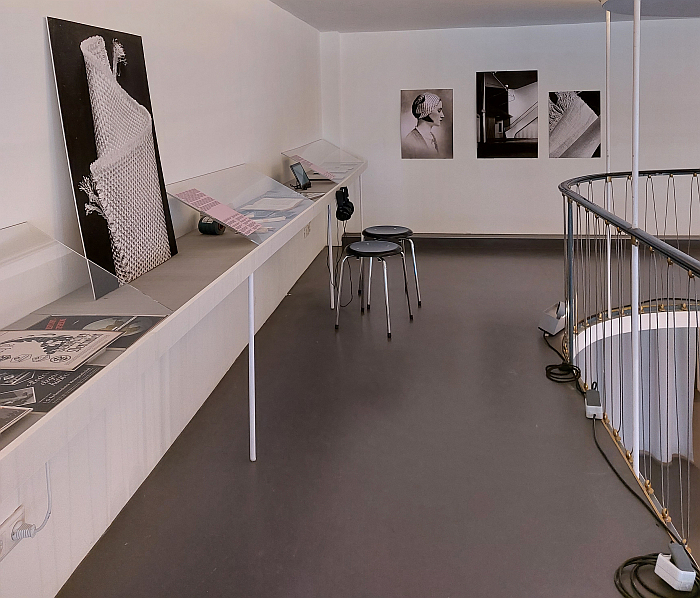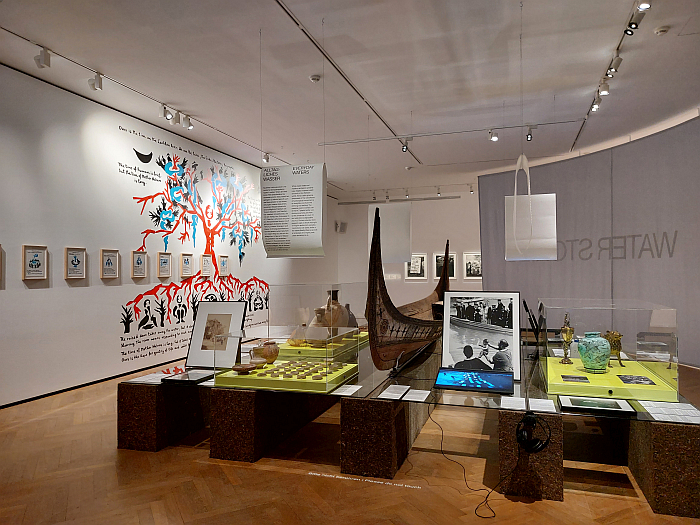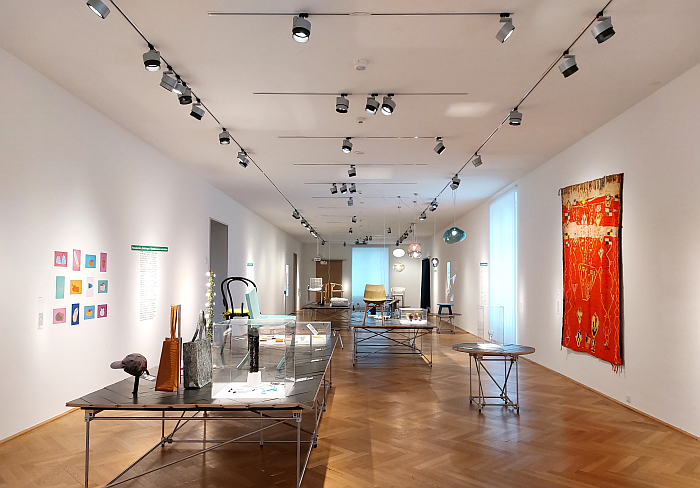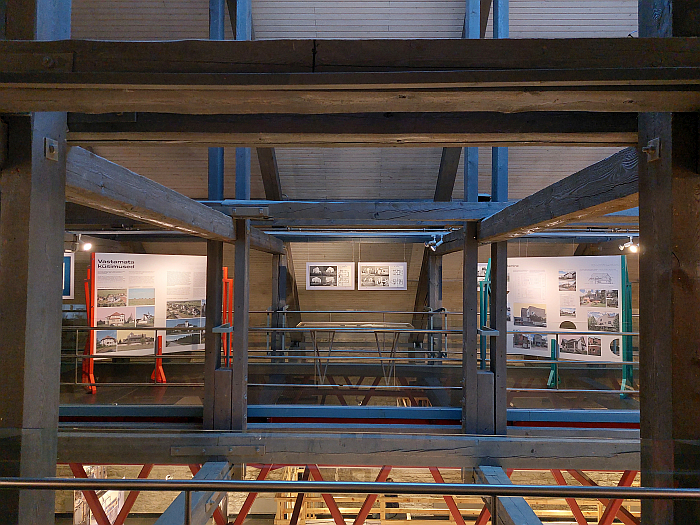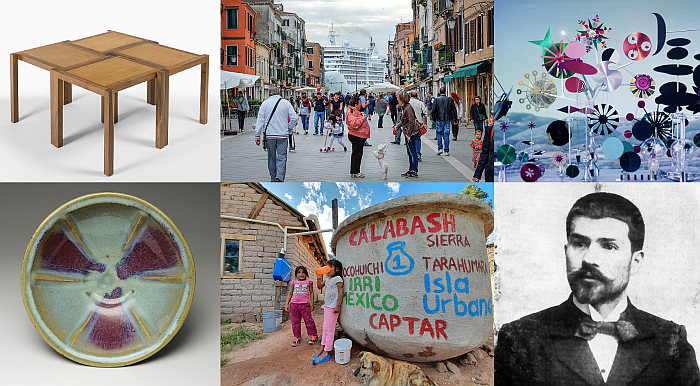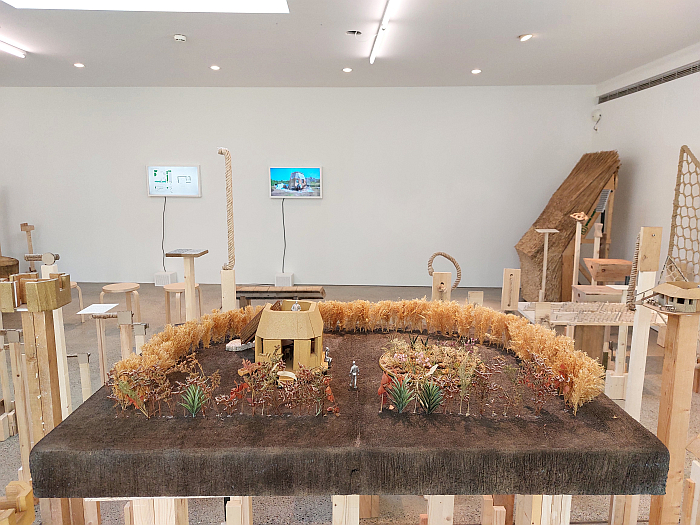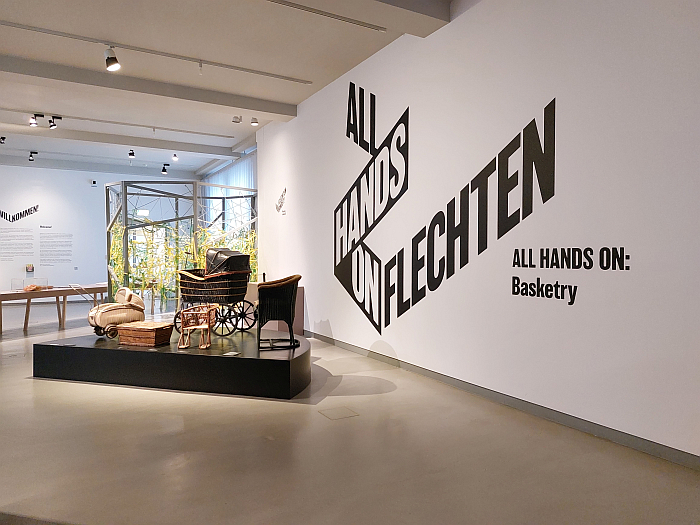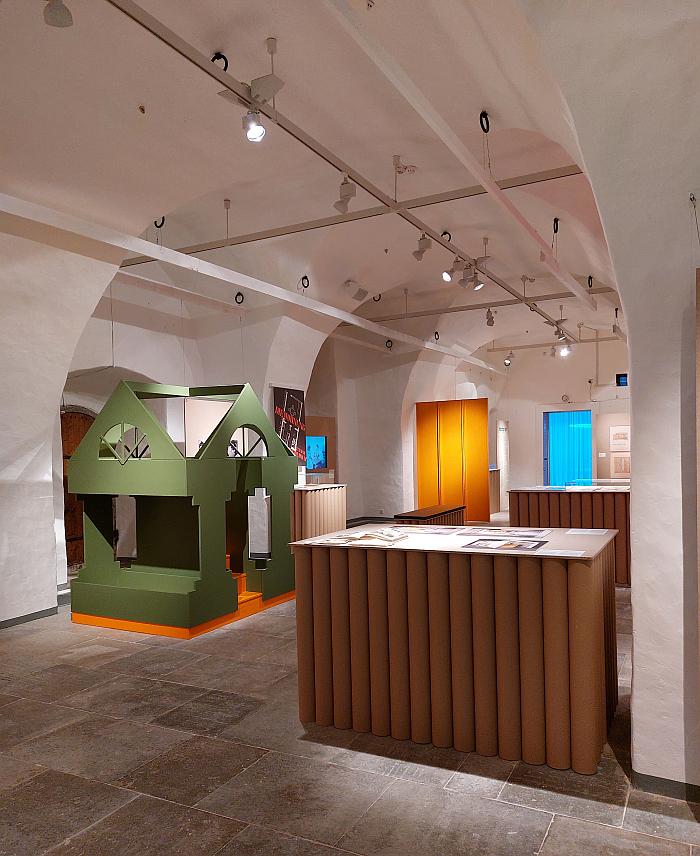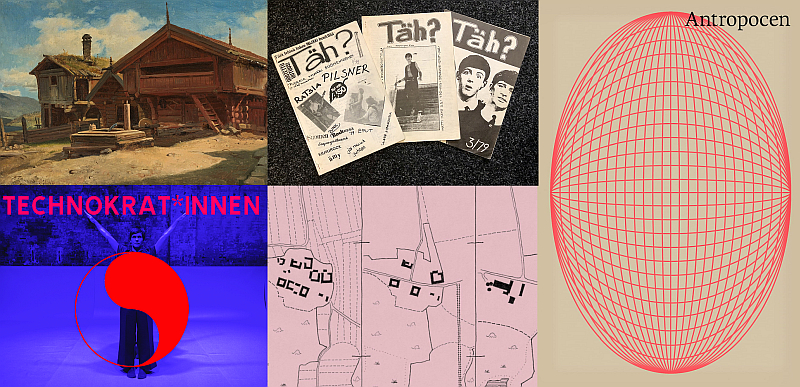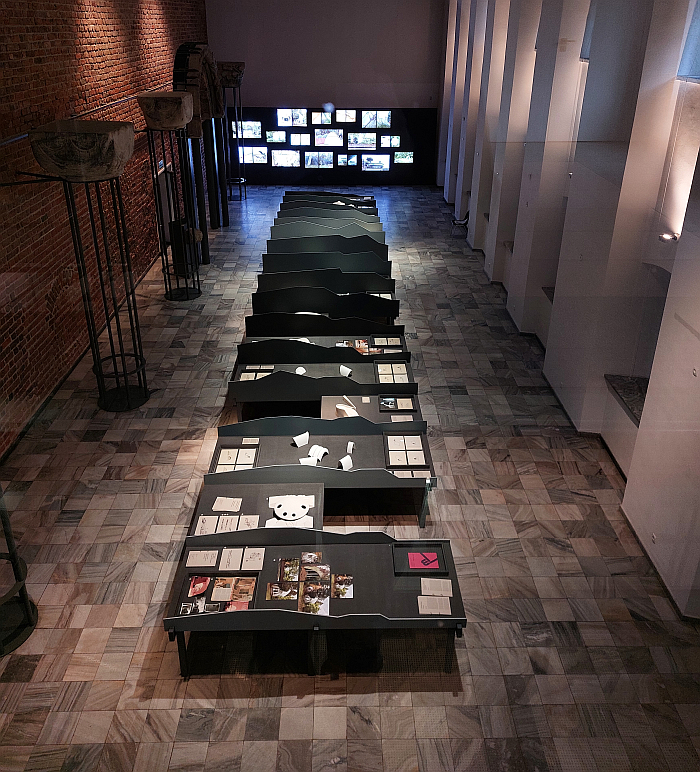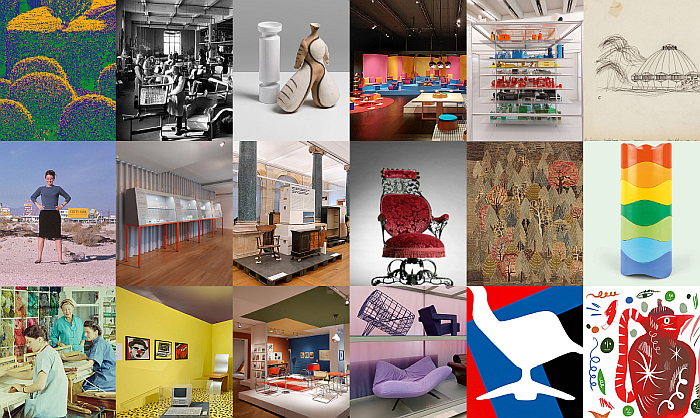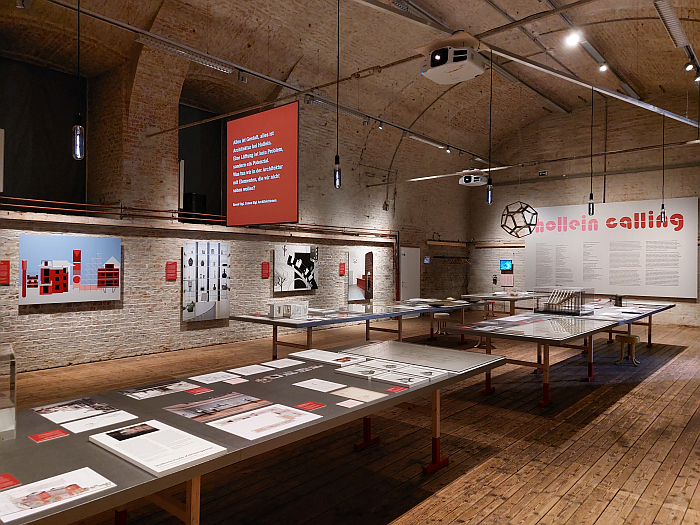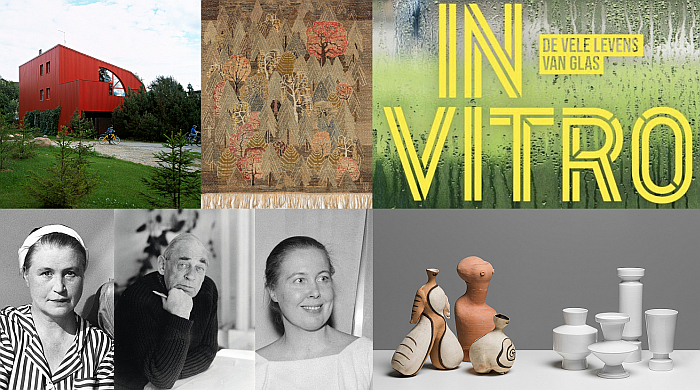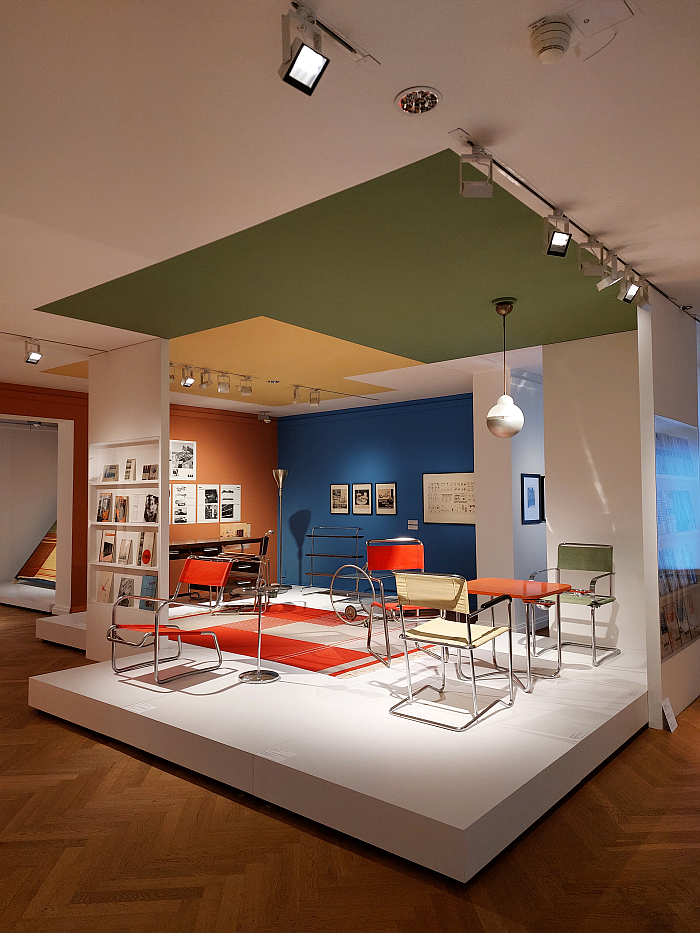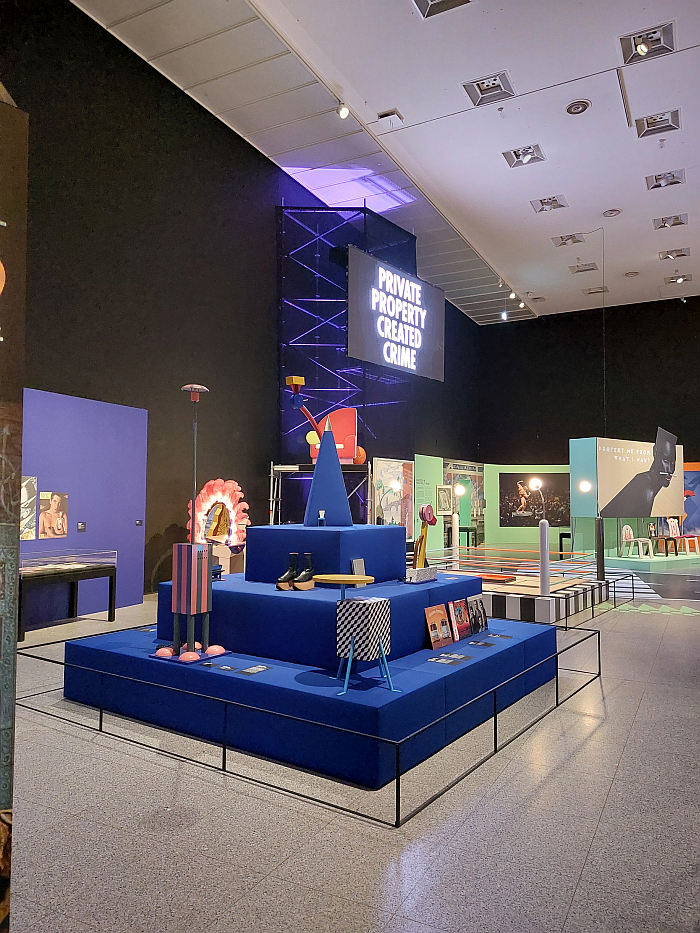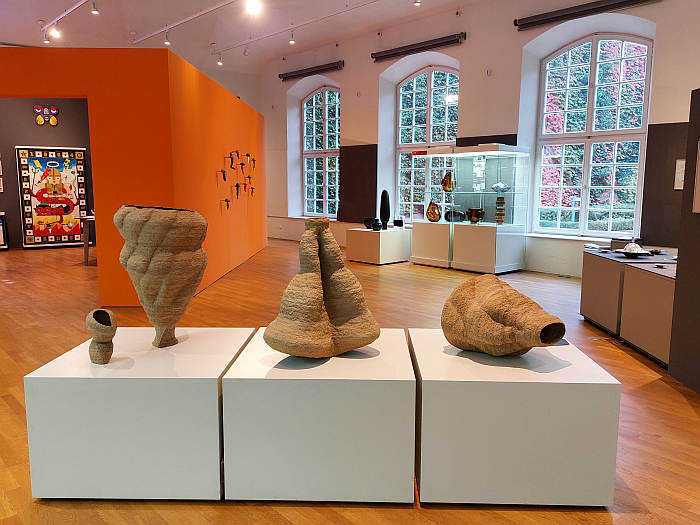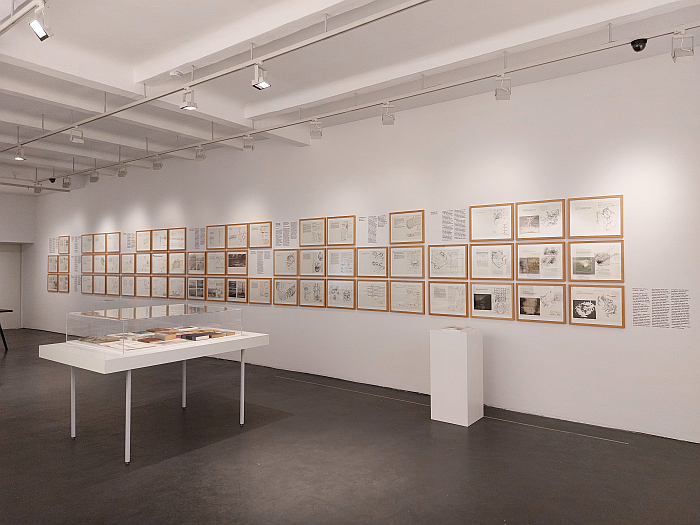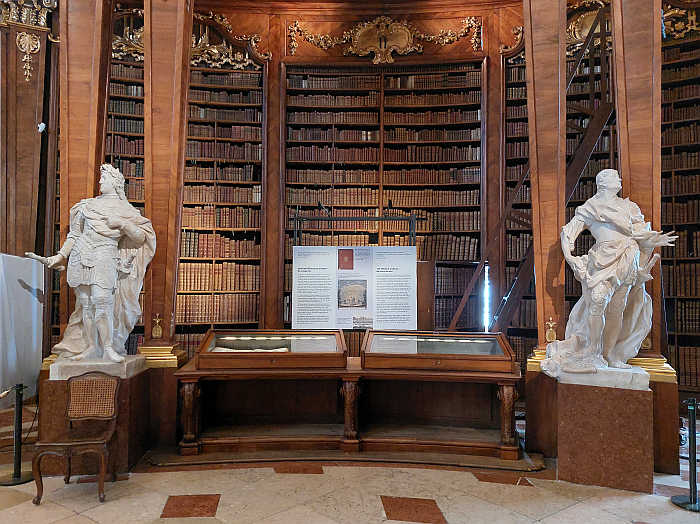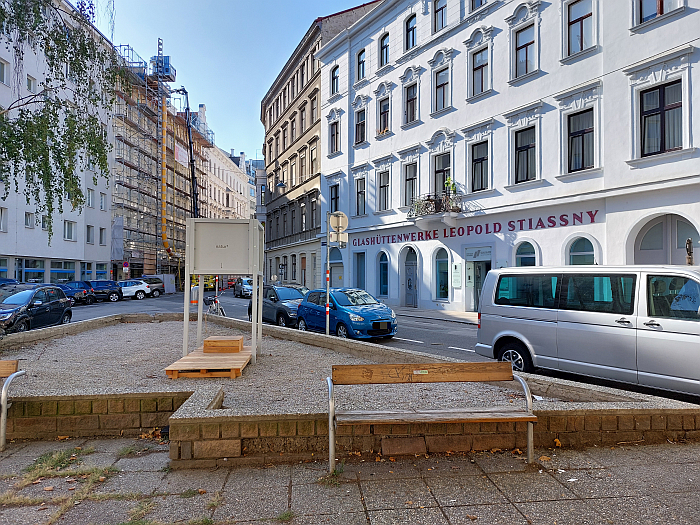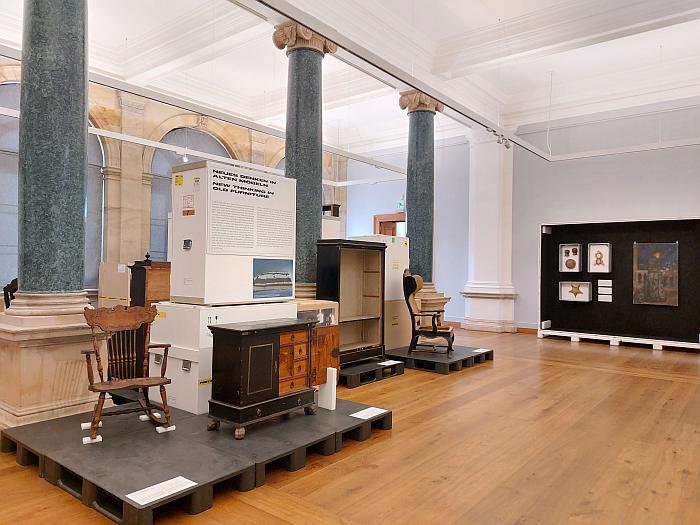Category: Architecture
5 New Architecture & Design Exhibitions for April 2024
As Letitia Elizabeth Landon so very, very, nearly wrote in 1823,
Of all the months that fill the year
Give April’s month to me,
For the architecture and design museums are then so filled,
With sweet variety!
Our sweet variety in April’s month of 2024 can be found in Dessau, Brussels, Rome, Paris and Dresden…….
Transform! Designing the Future of Energy at the Vitra Design Museum, Weil am Rhein
As we all know from the 1st Law of Thermodynamics, energy cannot be created nor destroyed, only transformed from one form to another.
And as a species we’ve developed a myriad ways of transforming one form of energy to another.
We burn oil.
We burn coal.
We burn gas.
We burn wood.
We burn an awful lot, don’t we…..
But we also employ, for example, the kinetic energy of wind, waves and photons or the potential energy of Uranium atoms.
With Transform! Designing the Future of Energy the Vitra Design Museum, Weil am Rhein, focus less on the physical and chemical transformations of energy, as on transformations in how we source, supply and use energy…….
Otti Berger. Weaving for Modernist Architecture at the Temporary Bauhaus-Archiv, Berlin
“To meet the needs of a living architecture,” opined Otti Berger in 1930, “we need clarity about what fabric is, and further, what fabric in space is”.1
With the showcase Otti Berger. Weaving for Modernist Architecture the Temporary Bauhaus-Archiv, Berlin, allow one to begin to approach appreciations of what both Otti Berger understood as fabric, “and further, what fabric in space is”, and in doing so not only enable differentiated perspectives on Weaving and Modernist Architecture but allow Otti Berger to begin to retake her place on the helix of design, and architecture, (hi)story……
Water Pressure. Designing for the Future at the Museum für Kunst und Gewerbe, Hamburg
It would inarguably, and inexcusably, be little more than employing a lazy, cheap, unwarrantable, stereotype and innuendo to opine that Hamburg is an apposite location for an exhibition exploring and discussing human societies’ relationships with water, being as it is a city where the incessant, clinging drizzle is only interrupted by the regular torrential downpours; rather, Hamburg is an apposite location for an exhibition exploring and discussing human societies’ relationships with water, as it is a city where the incessant, clinging drizzle is only interrupted by the regular torrential downpours. And because not only the fortunes and stature of the city were built on water, for all in the distant days of the fabled Hanseatic League, and of the pirates who cooperated with the city’s Hanseatic era leaders in their desires to assert Hamburg’s primacy on the Elbe1, but also Hamburg is physically built on, and for all physically built in, water. Which means that not only the streets and canals and banks – river and financial – of Hamburg offer access to perspectives on and of our relationships with water past and present, but that our relationships with water future will, invariably, be expressed through, and embodied by, Hamburg’s future. Or lack thereof.
With Water Pressure. Designing for the Future the Museum für Kunst und Gewerbe, Hamburg, not only create space for that exploration of and discussion on human societies’ relationships with water, but also for reflections on the roles, functions and responsibilities of design, and designers, in context of forming and defining our relationships with water past, present and future…….
Perfectly Imperfect – Flaws, Blemishes and Defects at the Gewerbemuseum, Winterthur
There is a convincing argument to be made that in our contemporary age perfection is one of our primary aims, one of our guiding aims, individually and collectively. A convincing argument to be made that perfection is, to paraphrase a Shane MacGowan, ‘the measure of our dreams’. And there are no shortage of experts out there to tell us all how to achieve that perfection, in all areas of life and work and love and home and hobby.
With Perfectly Imperfect – Flaws, Blemishes and Defects the Gewerbemuseum Winterthur question perfection, and society’s fascination with perfection…….
Bold and Beautiful. Estonian private houses from the 1980s at the Eesti Arhitektuurimuuseum, Tallinn
In the popular narrative of architecture and design in the second half of the 20th century the phrase ‘Postmodern’ is widely used; a wide use, and an equally wide, unquestioning, popular acceptance of what is meant, that all too often not only blinds us all to the heterogeneity of the period but also impedes meaningful debate and discussion on the motivations, positions and realities of that period. And on the lessons of the period.
With Bold and Beautiful. Estonian private houses from the 1980s the Eesti Arhitektuurimuuseum, Tallinn, remind of the need for more nuanced, and wider-ranging, reflections and discussions…….
5 New Architecture & Design Exhibitions for March 2024
In Shakespeare’s A Winter’s Tale Perdita bewails that she has no “flowers o’ th’ spring” to make garlands for, and to strew over, her beloved Florizel; “flowers o’ th’ spring” including violets, primroses, oxlips or “daffodils, That come before the swallow dares, and take the winds of March with beauty”.
Whereby in her infatuation with, and fearless youthful love for, Florizel, Perdita fails to appreciate that it wasn’t fear of the winds of March that kept the swallows away, swallows love a stiff wind; rather that they are all in architecture and design museums enjoying the new blush of exhibitions that invariably blooms forth every March. As should she and Florizel, for the shared experience of an architecture and design exhibition is a more sustainable and resilient conduit to maintaining the thrill of young love than a violet, primrose, oxlip or daffodil that will soon wilt and fade.
Our six, yes six, ‘exhibitions o’ th’ spring’ opening in March 2024 for swallows, lovers, Elizabethans, and us all, can be found in Hamburg, Vienna, New York, London, Paris and Weil am Rhein……
Tsuyoshi Tane: The Garden House in the Vitra Design Museum Gallery and on the Vitra Campus, Weil am Rhein
“When architecture is born, a place is born” opined Japanese architect Tsuyoshi Tane in 2018, continuing, “humans began to understand that by building architecture, a meaning is given to a place, and then that place has a story that can be passed on to others”.
But for Tane architecture doesn’t just bequeath a place meaning and a story, it also “gives memories to a place”, memories of the past and memories of the future, collective memories that help create bonds. But memories that are increasingly being lost in our complex, high-tempo, contemporary society, with all the inevitable consequences that has for an architecture that must grow organically from itself in unison with society; architecture and society which both need the memories of the past and the memories of future.
Thus, argues Tane, “to create the architecture of a more meaningful further future, perhaps we must … dive in to the past to think of the future, rather than only looking forward”.1
The exhibition Tsuyoshi Tane: The Garden House in the Vitra Design Museum Gallery, and the eponymous Garden House by Tsuyoshi Tane, the latest addition to the Vitra Campus in Weil am Rhein, allow one to approach not only a better appreciation of Tane’s positions but also to experience how they influence and inform his approach, his works, his architecture…….
All Hands On: Basketry at the Museum Europäischer Kulturen, Berlin
Basketry has something of the archaic about it, almost anachronistic, has echoes of a past we’ve all long moved on from.
With the exhibition All Hands On: Basketry the Museum Europäischer Kulturen, Berlin allow for, demand, a critical reassessment…….
Uneversum: Rhythms and Spaces at the Estonian Museum of Applied Art and Design, Tallinn
Arguably little characterises contemporary society, certainly contemporary European society, better than our relationship with sleep.
And, arguably, little charts the path of human society, again certainly European society, better than the (hi)story of our relationship with sleep.
With the exhibition Uneversum: Rhythms and Spaces the Estonian Museum of Applied Art and Design, Tallinn, explore and reflect upon sleep, spaces of sleep, rhythms of sleep, and for all on our relationships with sleep past, present and future…….
5 New Architecture & Design Exhibitions for February 2024
For all that as a species we like to think that we are in control of the wider universe, like to think that our mastery of physics and mathematics has put us in charge, little underscores the fallacy of that position as neatly as the Gregorian calendar, an apparently flawless invention, one that defines our lives, where everything sits so snugly…. until every four years we have to add an extra day to stop it all going haywire. Unless that is the year is exactly divisible by 100, but not by 400, then it isn’t a leap year. The Gregorian calendar doesn’t really work, it is a rough approximation, has an inherent inaccuracy we’re aware of, we understand…… but don’t know how to fix beyond pretending its all normal and adding an extra day every four years. Or not, if its 1800, 1900, or 2100.
Other animals don’t need an extra day every four years, their worlds’ progress in keeping with the seasons. Plants don’t need an extra day. Why do humans?
The inaccuracy of the Gregorian calendar does however mean we all have an extra day in 2024 to do something meaningful, something truly worthwhile…. like visit an architecture and/or design exhibition.
Our suggestions for those meaningful, worthwhile exploits for the 29 days of February 2024, and beyond, takes us to Leipzig, Malmö, Katowice, Oslo and Jyväskylä…….
Shape of Dreams. The Architecture of Witold Lipiński at the Muzeum Architektury, Wrocław
“Projektowanie i realizacja form powłokowych jest problemem złożony”, opined the Polish architect Witold Lipiński in 1978, “design and implementation of shell structures is a complex problem”. And it certainly is. For all a complex mathematical problem, and that of a degree that, for Lipiński, for all when combined with the associated technical challenges, “greatly limit[s] plastic ingenuity”, meaning as it did that architects were invariably restricted to forms “mathematically defined in a straightforward manner”, which employed but “the simplest elements of translational and rotational surfaces” and “supports of the least complexity”.
“Nevertheless”, he continued, unperturbed, “by juxtaposing sections of these surfaces and variously shaping the supports, a considerable number of architecture forms are obtained”.1
With the showcase Shape of Dreams. The Architecture of Witold Lipiński the Muzeum Architektury, Wrocław, allow one to appreciate how Witold Lipiński used his appreciations of, his application of, his approach to, his juxtapositions of, geometry to propose new spatial possibilities. And to push the borders of “plastic ingenuity”…….
5 New Architecture & Design Exhibitions for January 2024
Time was when new architecture and design exhibitions opened every month. Some months more. Some months less. But every month enough for a list.
Time was.
But time is.
And today you’ll struggle to find new showcases opening in August and January. If that’s a collective decision made by the global museum community, or pure chance, we no know. We can but observe it’s existence as an actual thing.
Or put another way: we can find, globally, but one, as in 1, new exhibition due to open in January 2024; and 1, famously, can’t be the basis for a list.
Thus, and as with August 2023, January 2023, and August 2022, in place of recommendations for new exhibitions opening, we bring you a list of all those architecture and design exhibition currently running that you can view in January 2024. And do so with the recommendation that you view as many as possible. Because from February onwards the number of new openings increases greatly, and you may struggle to keep up…….
Hollein Calling. Architectural Dialogues at the Architekturzentrum Wien
“So revolutionary his ideas”, opined the Austrian state broadcaster ORF in 1969 of architect Hans Hollein, “when he enunciates them they sound like the cosy, cordial habitiere of ages past. His ‘schauen se‘ and ‘eeeeeh‘ conjure up Fiaker, the chatter and gossip on Graben, the Riesenrad, memories of alt-Wien“.1
With Hollein Calling. Architectural Dialogues the Architekturzentrum Wien invite one to explore in more detail the vocabulary and articulation of Hans Hollein…….
5 New Architecture & Design Exhibitions for December 2023
According to Germanic folklore, “If December is wild with rain, then leave your fields and get thee to an architecture or design museum”
Our five locations for escaping the rains of December 2023 can be found in Cottbus, Rome, Maastricht, Tallinn and Zürich…….
Hej rup! The Czech Avant-Garde at the Bröhan Museum, Berlin
There is an argument to be made that popular understandings of, and the popular presentation of, inter-War European avant-garde architecture and design tend to focus on Germany and Russia, and on Functionalism, popular foci that tend to cause us all to forget that the inter-War European avant-Garde was a homogenous mix of positions and, and as with the Art Nouveau before it, an international moment defined by its variety of regional dialects.
With the exhibition Hej rup! The Czech Avant-Garde the Bröhan Museum, Berlin, provide for an introductory course in inter-War Czechoslovakian…….
Everything at Once: Postmodernity, 1967–1992 at the Bundeskunsthalle, Bonn
Postmodernism
¯\_(ツ)_/¯
With the exhibition Everything at Once: Postmodernity, 1967–1992 the Bundeskunsthalle, Bonn, request a more considered response…….
5 New Architecture & Design Exhibitions for November 2023
Back in the spring Haitian musician Wyclef Jean informed us all he’d be “Gone Till November”.
And so he should be back any day now; and given how busy he’s invariably been all summer, earning as he has been enough money to buy out blocks, he’s probably not had a chance to visit an architecture or design museum. And so, we assume, will be absolutely desperate to stimulate his cognitive faculties.
Our five recommendations for new exhibitions opening in November 2023 for Wyclef Jean, or indeed for anyone seeking to achieve fresh perspectives on architecture, design and the world around us, can be found in Vienna, Oslo, Brno, Krefeld and Ljubljana…….
The Tube. An Architecture for Conceivable Times at the Werkbundarchiv – Museum der Dinge, Berlin
“If we want to survive, if we want to reach the next level”, postulated the German architect Günther L. Eckert in 1980, “we simply have to risk the impossible. It is too easy to invest only in common logic and to dismiss everything that does not have these specific characteristics, everything that encroaches into the incorruptible dimensions of creative self-consent”.1
Günther L. Eckert’s “impossible”, his distancing from “common logic”, his encroaching “into the incorruptible dimensions of creative self-consent”, was the so-called Kontinuum, Continuum, a 250 metre diameter tube which formed a complete, unbroken, circle around the globe, constituted a Kontinuum around the globe, and in which all humanity was to live.
With the exhibition The Tube. An Architecture for Conceivable Times, the Werkbundarchiv – Museum der Dinge, Berlin, introduce Eckert’s Kontinuum and thereby allow space for reflections on not only architecture and the built environments we create for ourselves, and the whys and wherefores of those environments, but also on the possibilities for the future of both human societies and the natural environment on which we all depend.
And an exhibition on a Kontinuum that is also the last Werkbundarchiv – Museum der Dinge exhibition in their long-time home in Berlin-Kreuzberg, marks the end of their continuance in Berlin-Kreuzberg, before their imminent, involuntary, investor enforced relocation…….
Of Gardens and People. Designed Nature, Art and Landscape Architecture at the Austrian National Library, Vienna
Much as the (hi)story of architecture is also a chronicle of developments and changes in the social, cultural, economic, ecological, technical, et al realities of any given region, so to is the (hi)story of a region’s parks and gardens and urban green spaces.
Whereby the (hi)story of the latter is much less often popularly employed in studying and interpreting and learning from the (hi)story of a region than the former.
With the showcase Of Gardens and People. Designed Nature, Art and Landscape Architecture the Austrian National Library, Vienna, allow for reflections on gardens and parks throughout (hi)story and in doing encourage us all to take them as seriously as we do the architecture amongst which they invariably stand…….
5 New Architecture & Design Exhibitions for October 2023
In 1981 Irish stadium rockers U2 noted of October:
“And the trees are stripped bare,
Of all they wear”
That of course was 1981, before the, then approaching but much less tangible, irreversible consequences of climate change meant that the trees in Ireland, and across Europe, still proudly wear their leaves throughout October. A new reality that, we’d argue, may soon see U2 forced to rename the song ‘November’.
A reality, and a coming renaming, that sets the final line of the opening verse:
“What do I care?”
in a new, a troubling, and an important light.
One we all need to think about.
And little stimulates thoughts on contemporary and future society, contemporary and future relationships with the world around us, both the natural and humanmade, and forces a questioning of what we want, why we want it, and if we care, quite like an architecture and/or design exhibition.
Our five recommended new exhibition openings in October 2023 can be found in Chemnitz, Hornu, London, Brussels and Milan…….
Klassik Stiftung Weimar Theme Year 2023: Wohnen
In context of the 1923 Bauhaus exhibition in Weimar, that first wide-ranging presentation of the school, its work and its understandings of itself and the world in which it existed, the institute presented with the Haus am Horn by Georg Muche and its interior, furniture, fittings and accessories by the likes of, and amongst others, Erich Dieckmann, Alma Buscher, Otto Lindig, Benita Otte or Marcel Breuer, a synopsis of the prevailing understandings of and positions to domestic arrangements and domesticity amongst the Weimar Bauhäusler.
With their 2023 theme year Wohnen the Klassik Stiftung Weimar take us all back to a century and a bit before Haus am Horn and to understandings of and positions to domestic arrangements and domesticity in the late-18th/early-19th century Weimar of Goethe, Schiller, Wieland, Herder et al.
And also consider possible future understandings of and positions to domestic arrangements and domesticity as we all move towards 2123…….
